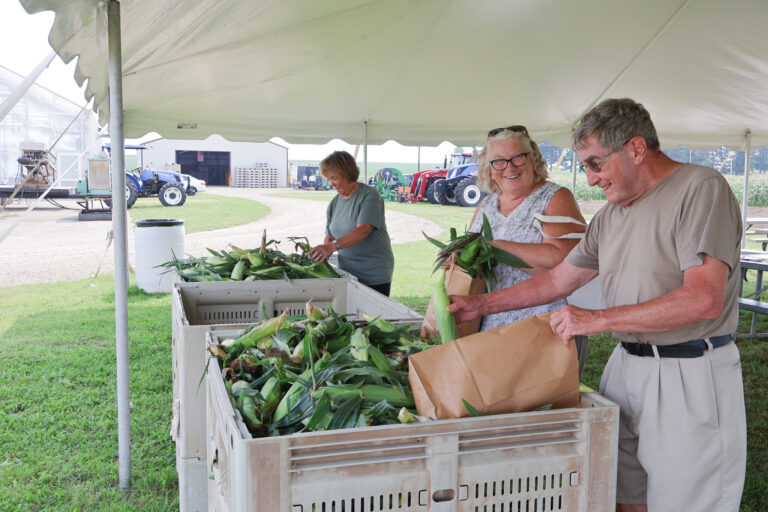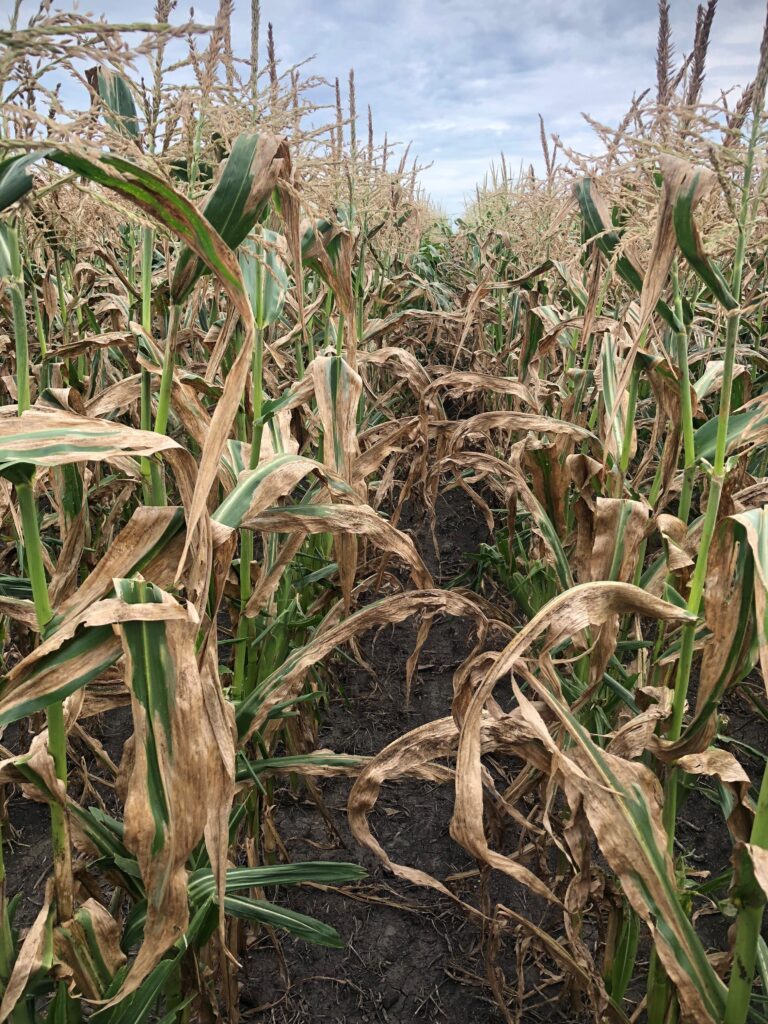
Diseases of Sweet Corn – Understanding and Managing Common Rust of Sweet Corn
Key points:
- Rust favors relatively cool and moist conditions.
- Yield losses can be significant (3-8% for every 10% leaf area infected).
- The best control method is planting resistant varieties. If planting susceptible varieties, fungicides can be effective.
- IFSI’s “XR” and “MXR” varieties provide complete resistance to the predominate races of rust in the major temperate growing regions across the world.
Overview and Geographic Distribution
Common Rust, as the name implies, is a common fungal disease of sweet corn in most temperate growing regions around the world.1 The Midwestern and Northeastern parts of the U.S. experience common rust to varying degrees annually. The disease can be epidemic in the southeastern U.S. where corn is grown nearly continuously. Other sweet corn growing areas such as France, New Zealand, and Chile can have seasonal presence of the disease as well.

Effects on Sweet Corn
Common rust can cause significant yield losses to processing and fresh market sweet corn crops. Estimates place yield loss from 3-8% for each 10% infected leaf area.1 The disease causes damage to the crop by robbing photosynthates and through reduction of photosynthetic area. Timing of disease development can impact the effects of disease. Young, juvenile tissue is more susceptible to disease.2 This can be an important consideration for sweet corn growing systems, as plantings are often made successively through a lengthy period of the growing season. Consequently, later plantings will be at younger, more susceptible growth stages when disease inoculum may be more prevalent.
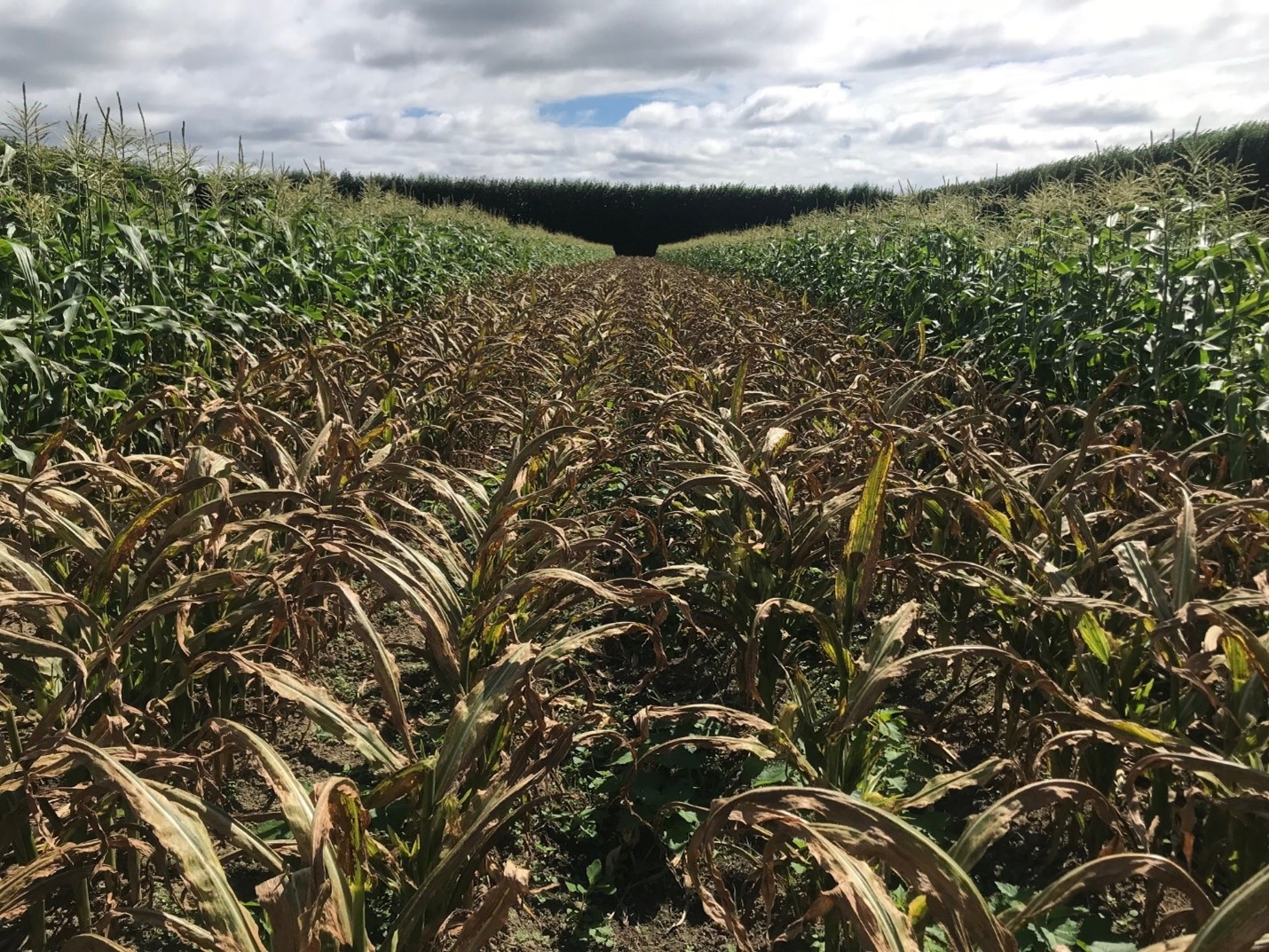
The Pathogen
The pathogen, Puccina sorghi, favors cooler (60-77 F) and moist conditions. In most temperate regions of the world the disease will not overwinter. Initial infection comes from rust spores that catch a ride on air currents from neighboring tropical or semi-tropical areas. In the midwestern U.S., this occurs in late May, Early June from Mexico up through Texas. About 6 hours of moisture are required for spore germination and infection, which is why in arid parts of the country common rust is an unlikely occurrence. The leaf whorl often can provide a suitably moist environment for infection even during dry periods. When infection occurs in the whorl it results in a banding pattern on the leaf.
Symptoms
Symptoms begin to develop 7 days after infection. Uredinia, also referred to as pustules, form on both the upper and lower leaf surfaces. This is a key differentiation from a different disease, southern rust, which generally will only form pustules on the upper leaf surface. Rust colored (if you were still wondering where the name came from) urediniospores that form in the pustules will act as secondary inoculum and continue to infect neighboring corn plants if conditions remain favorable. With severe infection, necrotic areas can form around the pustules and even whole leaves or parts of leaves can go necrotic (see photo above from a seed production field as an example of severe infection).
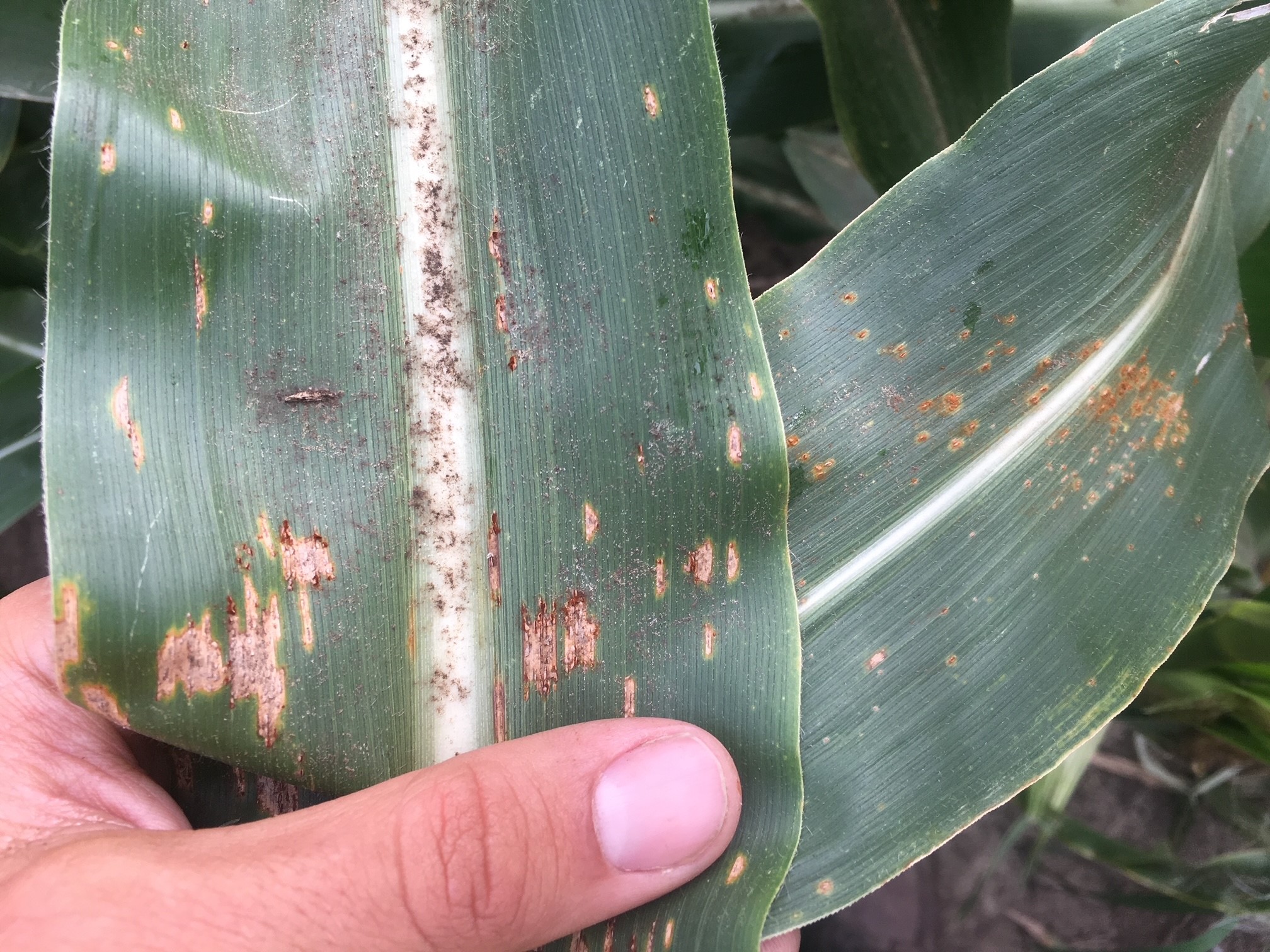
Control
We’ve established that common rust can be an impactful disease and that its occurrence is frequent in many growing regions, what are ways that growers can protect their crops? Residue management, which can be a viable control measure for many corn diseases, is not effective for common rust because the pathogen does not overwinter in residue.
Timely Fungicide application can be effective for control. The Corn Disease Working Group publishes a chart on the efficacy of various fungicides for control of corn diseases. That reference can be found here: https://cropprotectionnetwork.org/publications/fungicide-efficacy-for-control-of-corn-diseases
The most efficient method of control is with resistant varieties.3 There are two types of resistance, general resistance, and specific resistance. General resistance results in a reduction of disease or slower development of disease. This is also known as polygenic resistance, as it is controlled by many genes within the plant. For sweet corn, specific resistance is more often employed and results in complete control when pathogen populations lack virulence against the resistance gene. These specific genes for common rust are referred to as Rp genes. The resistance response will result in chlorotic flecking from a hypersensitive response of the plant to the pathogen. Essentially, the cells around the point of infection rapidly die preventing spread of the disease. A small sacrifice for the plant to prevent further spread from the infection. A few of these Rp genes either by themselves or in combination are typically used by sweet corn seed companies due to their effectiveness against the current races of rust in the U.S. (e.g. RpG, RpGI, RpGDJ, RpGFJ, RpI, RpG5JC). IFSI denotes our rust resistant varieties with an “XR” or “MXR” suffix at the end of a variety name (e.g. Signature XR, Superb MXR). Our tech sheets and product descriptions also list the specific Rp gene in the hybrid for further detail. Specific resistance does come with some risk as the pathogen population may become virulent against the gene rendering the gene an ineffective method of control. A story for a different time, but this occurred in the U.S. with Rp1D in the 1990s. As a result, Rp1D hybrids are susceptible to the predominant race in the U.S. and no longer relied upon in the U.S. for control.
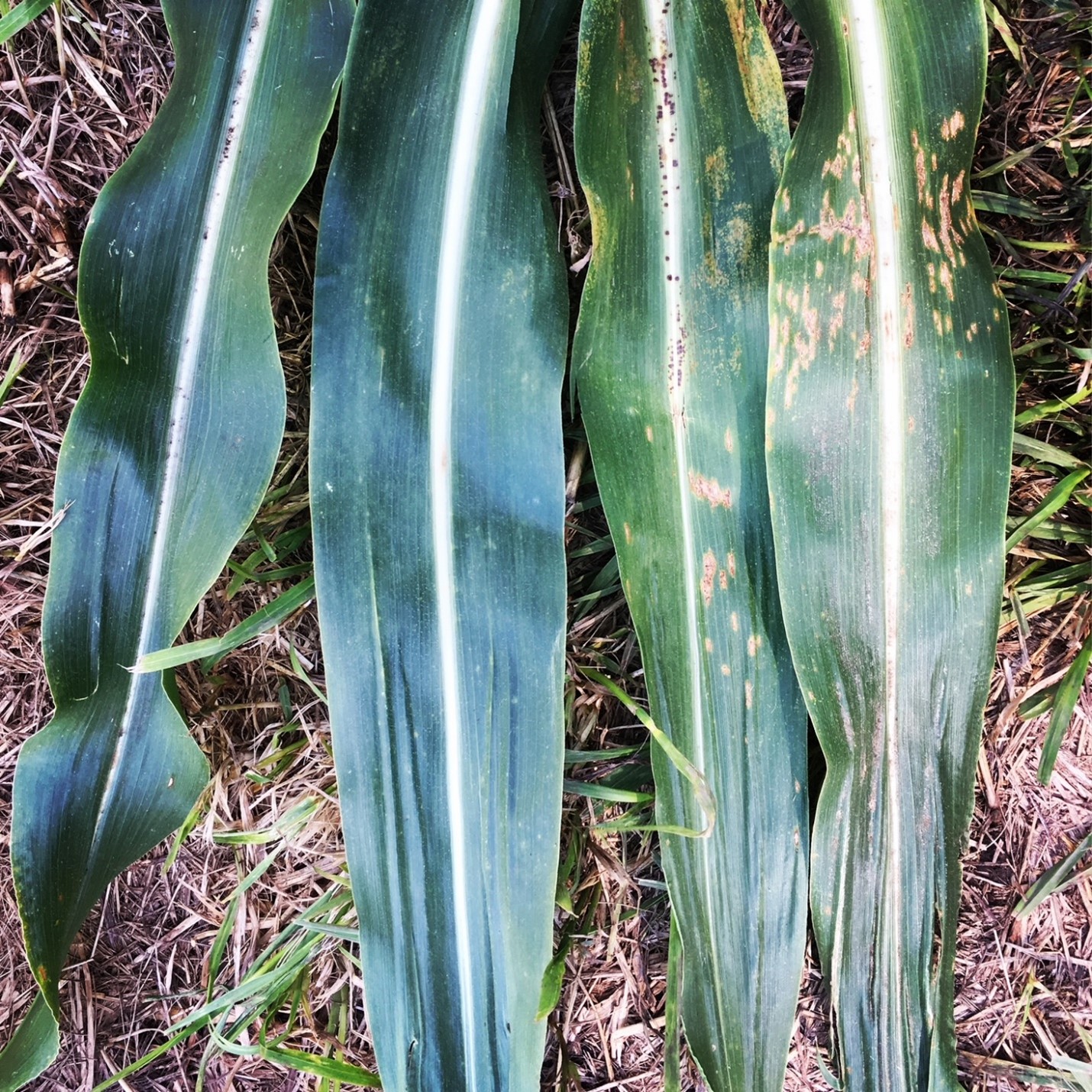
We continue to monitor the rust populations in major temperate growing regions for changes in effectiveness for these major resistance genes. This is an important aspect to continue delivering resistant varieties and effective control for growers against this disease.
References:
Munkvold, G., and D. White. Compendium of corn diseases. No. Ed. 4. AACC International, 2016.
Headrick, J. M., and J. K. Pataky. “Expression of partial resistance to common rust in sweet corn hybrids at various host growth stages.” Phytopathology 77.3 (1987): 454-458.
Hooker, Arthur L. “Corn and sorghum rusts.” Diseases, Distribution, Epidemiology, and Control. Academic Press, 1985. 207-236.


